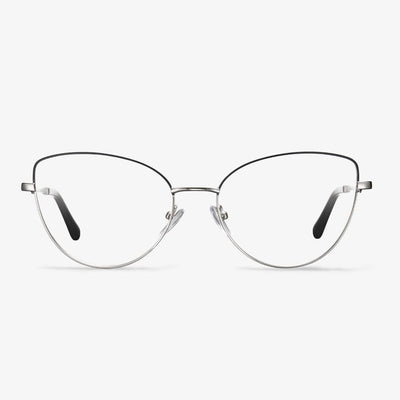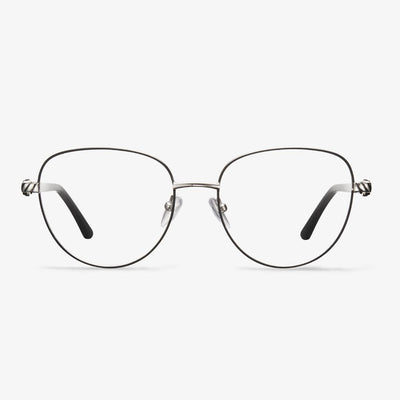How Long Does It Take to Get Used to New Glasses?
Most people are excited when they get a new pair of glasses for the first time. But sometimes there is an adjustment period before your vision is fully comfortable. So, how long does it take to get used to new glasses?
In most cases, it takes only a few days to adjust to a new pair of glasses. When you are adjusting to your new glasses, you might experience some symptoms such as mild dizziness, blurry vision, or eye strain. This would be a normal situation. These symptoms are common with new glasses and typically last only a few days.
Even though the new glasses come with the same prescription, different frames or lenses can alter your vision until you get used to the new frame style, frame material or lens type.
Besides, other factors will affect the adjustment time, such as the complexity of your prescription, the type of lens, and so on.
How long does it take to adjust to new glasses? It usually takes a few days. However, if you experience eye strain, distorted vision, and especially headaches for a few weeks, you had better contact the eye doctor or the optician. They will check your eyeglass and the prescription.
How long does it take to get used to progressive lenses?
Because the adjustment of each eye is different, so there will be some differences in the adaptation period. It usually takes about two weeks to get used to it. Probably many young people are familiar with this kind of lens, so they adapt to them for only a week or so and can restore the normal visual effect. If it's been two weeks and you still feel that you can't see clearly, or you have the feeling of nausea, etc., then you need to test and adjust. You need to go to the hospital to see the specific case, to find out whether it is a quality problem of the sunglasses, or there are some artificial reasons. If there is a problem, we should also replace the lenses in time, otherwise, it may lead to the problem of visual fatigue. Therefore, it is still necessary to promptly confirm the case of optometry, and then replace the appropriate glasses.
What Do Trifocal Lenses Do?
Trifocal glasses can provide correction for some eye conditions including presbyopia and cataracts. Presbyopia often occurs in people who are between the age of 40 and 60. People’s eyesight starts to deteriorate and they are unable to focus at near. Wearing trifocal glasses can help correct blurred vision, eye strain, and headaches. The trifocal intraocular lens placed during cataract surgery can also resolve cataracts.
From above, you have learned some information about trifocal lenses. But what are the pros and cons of trifocal lenses? So, in the following section, we will focus on the advantages and disadvantages of trifocal glasses.
The material of the nose pads
There are many differences between silica gel and PVC materials. For example, silicone can pass ROHS certification and is environmentally friendly. Silica gel is soft and feels good, while PVC products are rough. Silica gel products are soft, while PVC products are hard. Silica gel products are more flexible, but PVC has no toughness. Silica gel products are usually made to be more transparent. Glass frames made of plate material and TR-90 material, are relatively not heavy and non-allergic. Typically, the TR90 frame is cast to form a nose pad attached to the glasses ring. As the plate frame is cut out from compressed materials, the plate frame with a nose pad is usually injected into the nose pad after the frame is made.
TERAISE Polarized Clip-on Sunglasses Over Prescription Glasses
The use of a yellow night vision clip helps reduce the glare of other vehicles' lights effect, and a nearsighted night vision clip can improve the safety factor of night driving. You can wear myopic prescription night vision glasses for a small amount of money, saving at least $350 / euro. It only weighs 4 grams. With a strongly polarized lens, the glare can be weakened, simple, and beautiful. On cloudy, rainy, or foggy nights, it's safer to wear a night vision clip. They have 18 months of quality assurance and comprehensive customer service.
What Are Bifocals?
There are several kinds of lenses available in the market. Now, there is a kind of lenses by stacking two different kinds of lenses together and they are called a bifocal lens. Bifocal lenses are lenses with lines separating two different prescriptions. There is a presence of a distance lens at the top and the lower part has a lens that can be used to view the objects placed nearby.
Bifocal lenses are designed for people who have presbyopia, a condition in which the person can’t see the nearby placed objects. Presbyopia is an age-related condition, often occurred when people are over 40 and people often have blurred vision.
At the same time, there are different types of bifocal lenses present and they provide the same user which is the lower part of the lens is used to view the nearby objects or to do work related to reading and writing while the upper part of the lens is used to view the objects placed at a faraway distance or to do an activity like driving.
So, in the following section, we will show you the different types of bifocal lenses.
You need to buy real titanium frames.
In general, titanium frames range from hundreds of yuan to thousands of yuan. Many store counters display frames called pure titanium, but if you look closely at the labels, there is no indication of the titanium content or composition. When you buy titanium frames, check if they are titanium or pure titanium. In reality, pure titanium glasses frame refers to the composition of titanium more than 99%, so you can use the weight to see if it is pure titanium. If the frame is heavy, it is definitely not pure titanium.











































